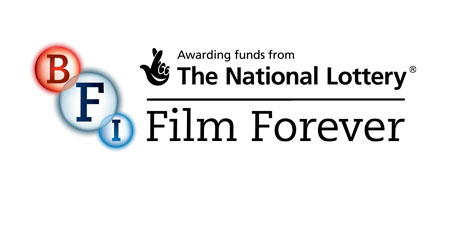David Lynch’s One-Minute Masterpiece
20 January 2025
LUMI Programmer Dylan Kelly honours the late master director David Lynch by looking at his short film, Premonitions Following an Evil Deed.
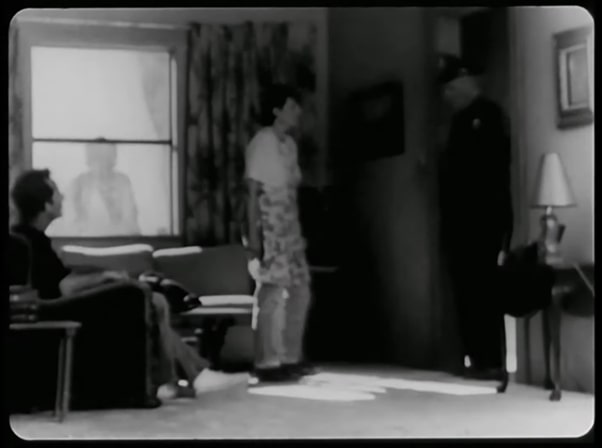
After David Lynch’s death on the 15th January, the entire cinematic world stopped. If your social-media feeds are anything like mine, you’re still seeing hundreds of photos of Lynch: usually black-and-white, always smoking, with electric-white hair in various states of disarray. As a member of the illustrious dictionary-directors (directors who have an adjective named after them) it was inevitable that people would share clips of their quintessential “Lynchian” moments. Films of epic scope seem appropriate for these tributes, and Lynch’s longer works (including the 18-hour Twin Peaks: The Return, and the 3-hour Inland Empire) have offered plenty of moments to re-share over the last week. Letterboxd has been populated with teary tributes under his most acclaimed films, particularly Blue Velvet and my personal favourite, Mulholland Drive. Some Lynch-heads have even been sharing behind-the-scenes clips and the YouTube “Weather Reports” where his high-pitched Montana accent lives up to Mel Brook’s moniker: “He’s Jimmy Stewart from Mars!” The popularity of these clips shows the other truth of Internet virality: short means shareable. Luckily, David Lynch was also a prolific director of short films. IGN has shared his PlayStation 2 advert while countless horror-themed accounts have been posting the nightmarish Six Men Getting Sick and The Grandmother. However, Lynch’s shortest ever film, Premonitions Following an Evil Deed, has been absent from my feeds. As it is my favourite short film, I want to change that.
But before you read on – watch the 58 second film here!
Infamously, David Lynch fell in love with digital filmmaking in the early 2000’s and never returned to shooting on film stock. Before Inland Empire his first experiments with digital filmmaking were short films uploaded directly to davidlynch.com (a now defunct website). These films are nobody’s favourites – they are low-resolution and reminiscent of early (albeit very strange) YouTube videos –but they do show a master filmmaker pushing the limits of a very new medium. Premonitions Following an Evil Deed is the exact opposite exercise. For the 100th anniversary of the Lumière brothers’ first film, forty-one filmmakers were given an original Cinématographe camera (invented by the Lumières) to shoot their own short. But there were rules: the film had to be under one-minute; have no synchronized sound; and be no more than three takes. Jacques Rivette, Michael Haneke, Peter Greenway, and Spike Lee were just some of the famous names that accepted the challenge, but David Lynch’s film was the most aesthetically radical of them all.
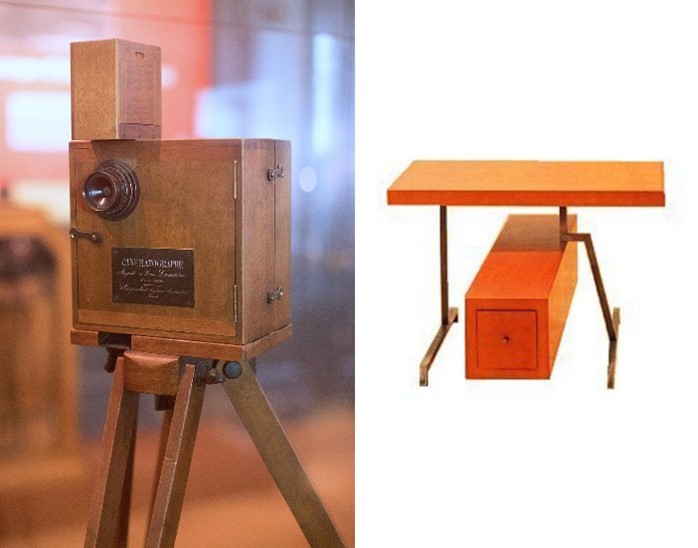
The Cinématographe Camera (Left) & David Lynch’s furniture design (Right)
The camera, which is mostly wood and glass, would fit in at one of Lynch’s furniture exhibitions. He talks passionately in this interview about the tactile character of the Cinématographe camera as if it was a sculpture. It must have inspired the sets for Premonitions – wood and glass feature heavily throughout. The opening shot (with the disfigured dummy’s haunting face looking almost human in the grainy lens) makes a point of having the policemen awkwardly climb over wooden fences:
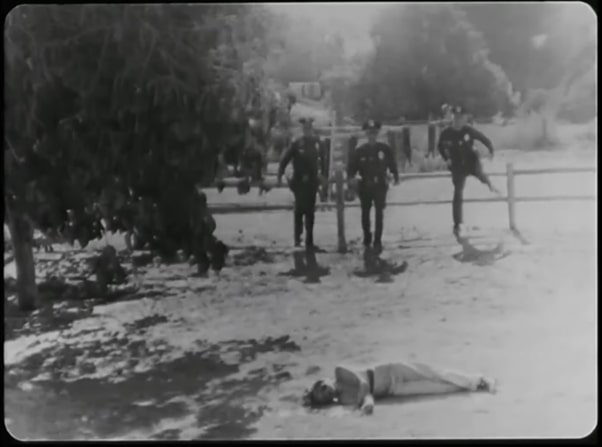
Then, as the woman (presumably the mother of the victim) has her premonition in the house, she is sat by a glass window that glows with a bright white light at the top of the frame (a window that Lynch will return to later):
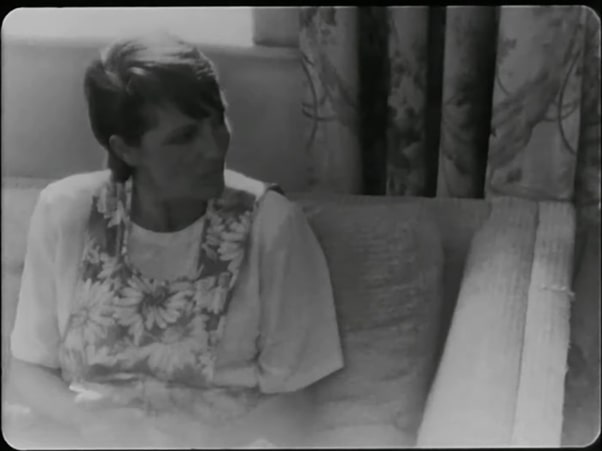
As the dream sequence/premonition begins, the floral set returns us to a natural, woody environment that looks like a poorly scanned black-and-white copy of a Pre-Raphaelite painting. This was the first time I’ve noticed the fawn under the tree, despite countless rewatches:
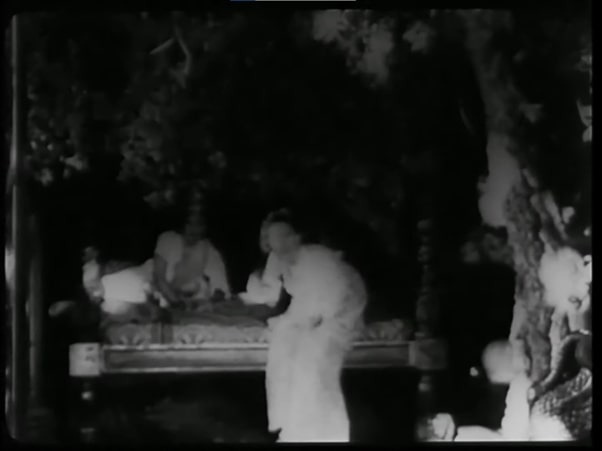
This floral landscape is literally set alight in that fantastic transition into Lynchian nightmares – the glass is back, this time as a voyeuristic bondage chamber surrounding the woman as masked men appear to electrify her. Psychosexual violence has always been a central image of Lynch’s visual vocabulary, with the sexual traumas of Blue Velvet and Fire Walk With Me earning him admiration and condemnation alike. I think this film, and particularly this shot, condenses all of that discourse into one jet-black image. It haunts me.
.jpg)
And yet, somehow, that isn’t even my favourite shot of the film. As we transition (through fire) back into the room with the parents, we see that the police-men have arrived. As they are silently miming the delivery of bad news, look back to that window again... It can’t be accidental. The mother’s shadow is silhouetted against the pure light of the glass, almost lifted above the grainy landscape. Her shadow looks detached from her body, broken free of herself and staring back into the room (or out to the camera — and to us). Have you ever seen an out-of-body experience rendered with such dread so simply?

Now that David Lynch has passed away, Premonitions will remain his shortest film. It’s the best example of how Lynchian ideas can be compressed into absolute brevity without losing their sense of dread and urgency. As perhaps the only “Lynchian” silent film, it provides a unique context through which to consider his contribution to the cinema, and his conscious position within the seventh art’s 100-year history. Premonitions also remind us that Lynch’s interests extended beyond the cinema. His life-long fascination with carpentry and interior design drives the imagery of this short but is also omnipresent throughout his filmography. Make sure to check out QFT’s screening of Lost Highway next week to see how Lynchian interiors create a different type of dread across a feature-length runtime.
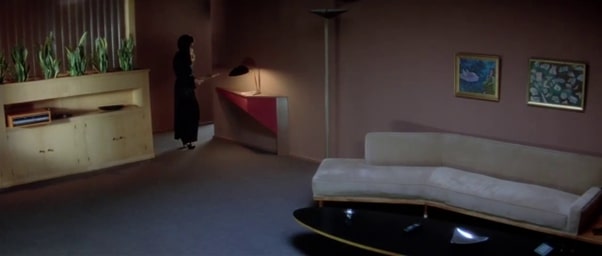
QFT screening of Lost Highway on Thursday, 30th January @ 20:45



